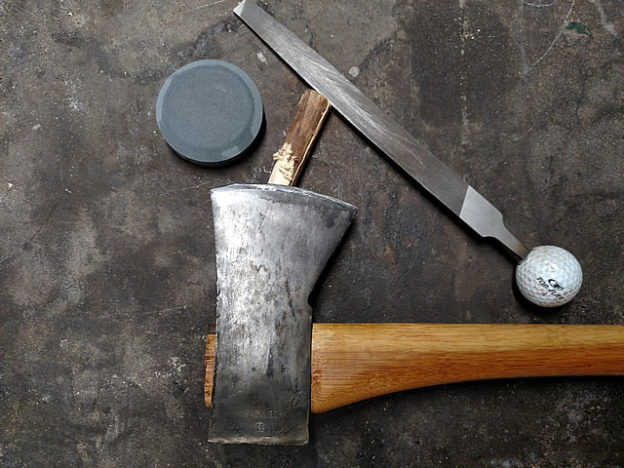Supplies: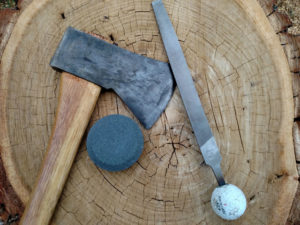
Sharpen an Axe in the Field
If you are sharpening an axe in the field here is the safe way to hold the axe while working on the edge. Rest the handle on your shoulder to work on one side then rest the handle on the ground to work on the other side of the bit.
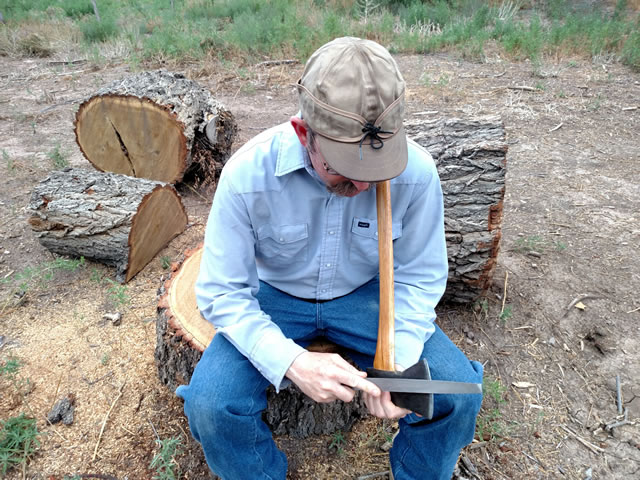
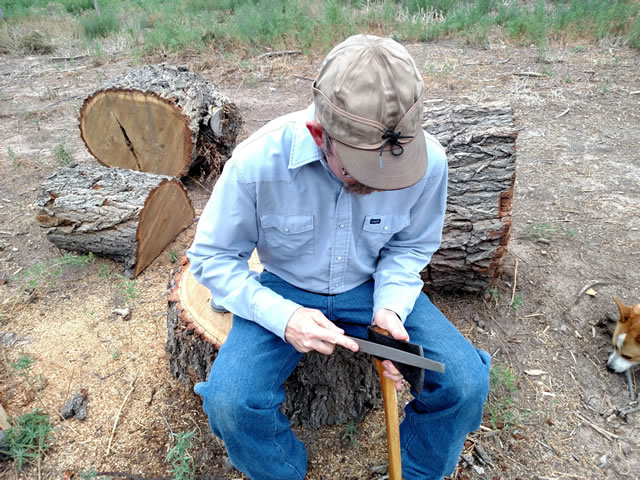
All About the Edge
Most axe edges have a primary bevel and a secondary bevel. When you begin to sharpen your axe if the bevels need to be re-profiled, or the bit is damaged, start by using a bastard file.
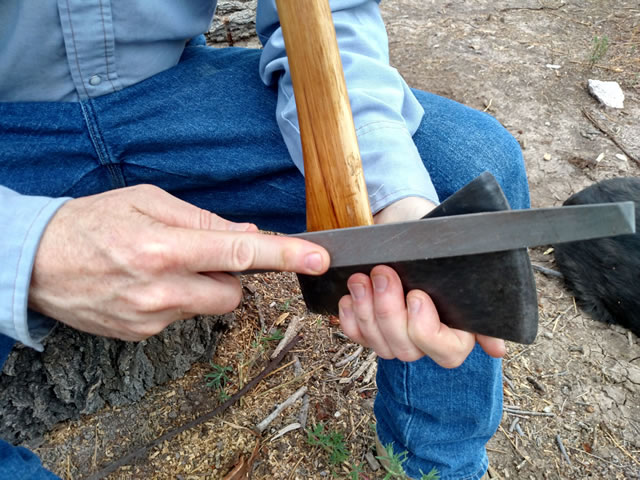 Working in the field, without a vice, file away from the butt towards the edge, in this picture file from left to right. This method is not as effective as filing towards the butt however it is much safer in the field. Keep constant pressure on the file and maintain the same bevel angle with each stroke. When using the file for the first time, it is a good idea to count the strokes you take and use the same number of strokes on each side of the bit. As you gain practice you will not need to count you will simply file both sides of the axe until they match and are at the correct bevel.
Working in the field, without a vice, file away from the butt towards the edge, in this picture file from left to right. This method is not as effective as filing towards the butt however it is much safer in the field. Keep constant pressure on the file and maintain the same bevel angle with each stroke. When using the file for the first time, it is a good idea to count the strokes you take and use the same number of strokes on each side of the bit. As you gain practice you will not need to count you will simply file both sides of the axe until they match and are at the correct bevel.
The Bevel
The axe pictured required a re-profiling so I started by setting the primary bevel.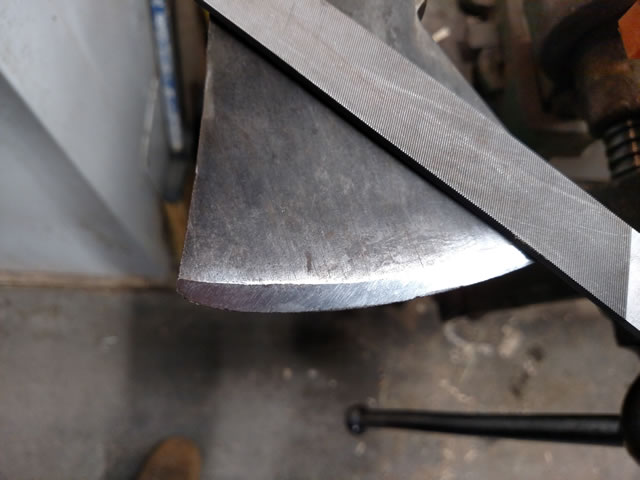
Notice how the bevel runs all the way to the tip of the edge. This axe had been damage, as seen in this picture, and required a bit of filing. After the primary bevel was completed, on both sides, I set the secondary bevel.
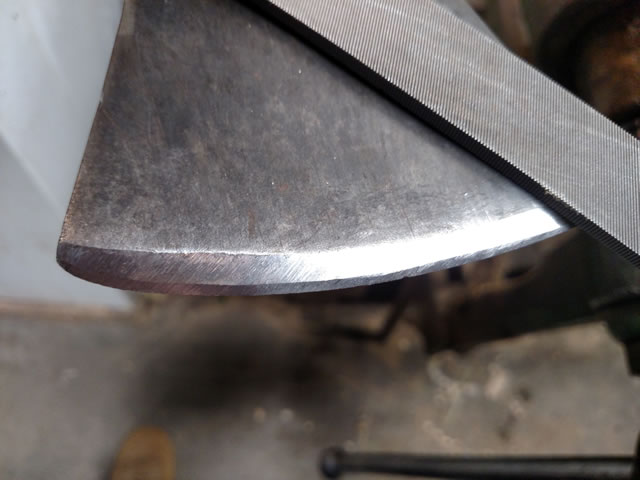
Because I had the axe in the vice, I was filling towards the edge which allowed me to remove material fast and more precisely. When the bevels are set the axe is rather sharp. This stage is often called a working edge. To finish the edge I switched to a sharpening stone, in this case, the puck.
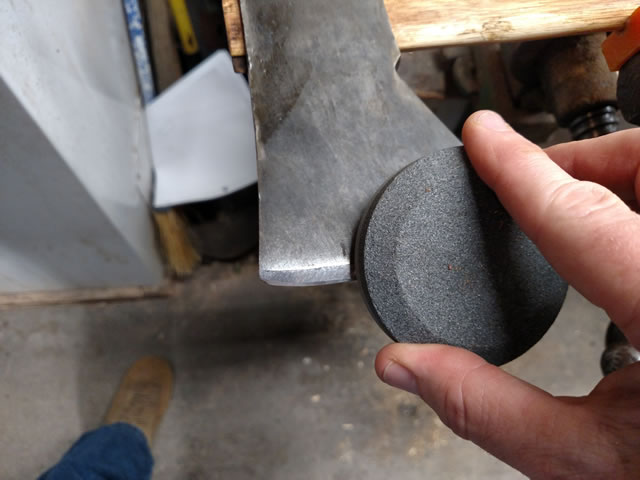
A good way to test the sharpness of an axe is to try and cut shaving from a stick. If it will cut shavings it will make wood chips.

When your axe is sharp take a little extra time to treat the handle with a bit of boiled linseed oil and add a coating of Ballistol to the head.
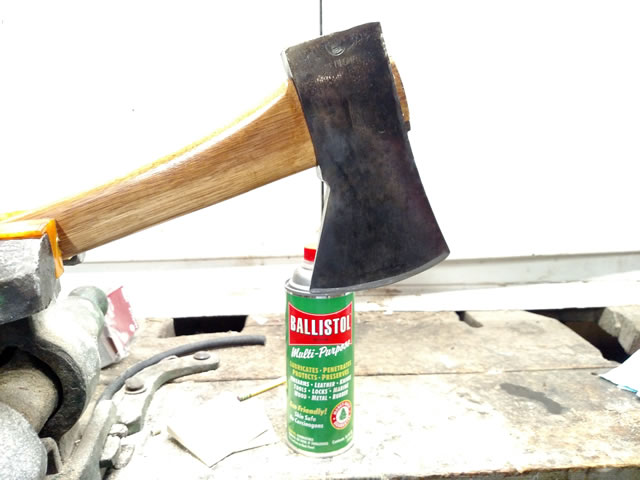
Now your axe is ready to go into the woods and make wood chips!
